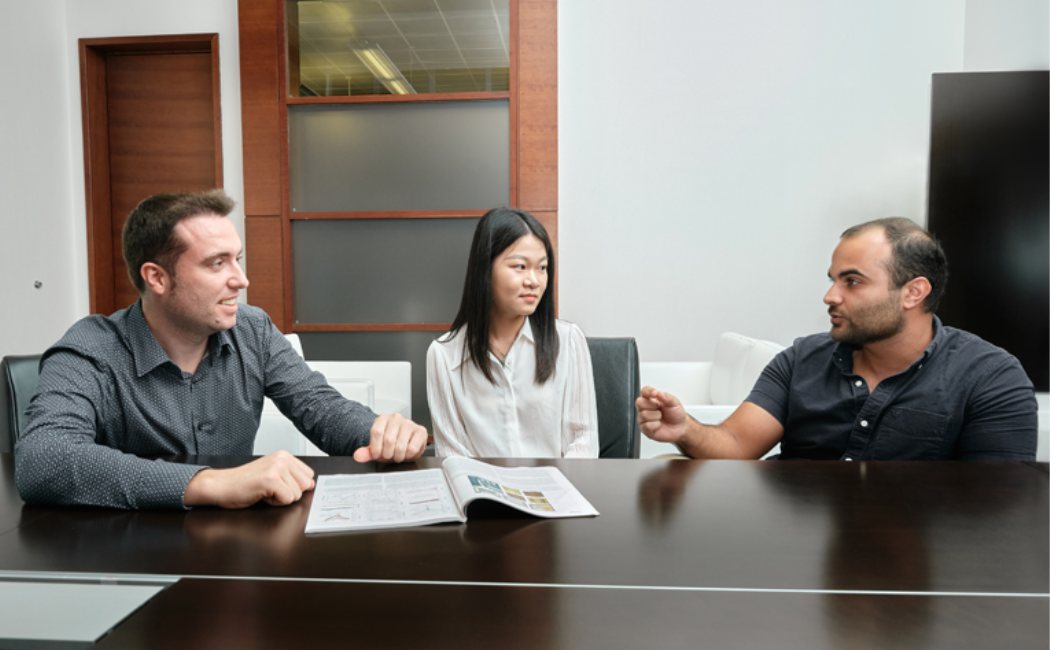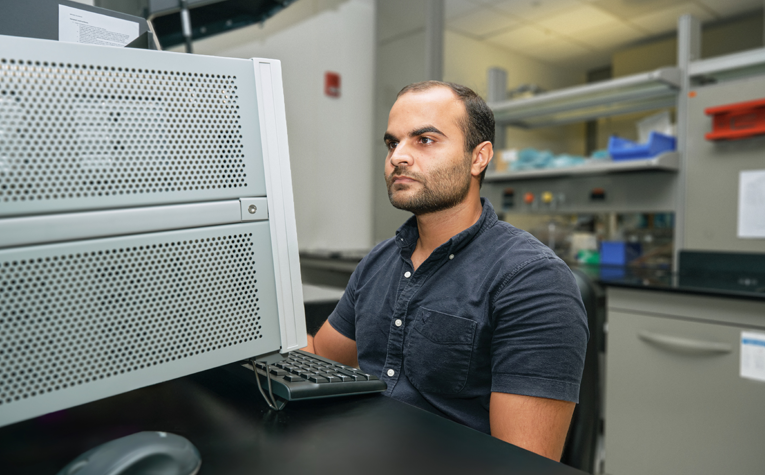
12 September, 2023
Of the elements that comprise a successful academic research group, the students are an essential component, the lifeblood of the endeavor. And, for students, being part of a strong team can have a big impact on their student experience.
“I’m always looking for potential students to join my group,” says Mario Lanza, a materials scientist working on 2D nanomaterials for electronic devices. “As professors at KAUST, we work very hard to attract the best students,” he adds.
Lanza has assembled a hard-working and vibrant bunch.
“One of the best things about being a student in Mario’s group is the diversity within the team in both cultural and scientific backgrounds,” says Ph.D. student Osamah Alharbi. “It makes conversations and scientific discussions really interesting,” he says.

Osamah Alharbi, a Ph.D. student in Mario Lanza’s group, values the diversity in both cultural and scientific backgrounds among his colleagues because it enriches their conversations and scientific discussions. In Lanza’s group, he works on cutting-edge scientific challenges, gaining expertise that could benefit industry in the future. ©KAUST 2023; Eliza Mkhitaryan
In Lanza’s group, discussions are focused on developing advanced electronic devices by incorporating high-performance 2D nanomaterials into microchip design. Chips are assembled from a combination of conductor, semiconductor and insulator materials, which combine to control flow of electric charge. Different 2D nanomaterials, with key advantages over conventional 3D materials, can be used to perform each of these roles.
“Two dimensional materials, such as graphene or MXenes, have a higher conductivity than metals,” Lanza says. “They also dissipate heat very well, are almost transparent and are flexible,” he adds. For the semiconductor component, which switches on and off in a chip, two-dimensional semiconductors are less leaky in the off state than their 3D counterparts.
“This will make your device switch faster and consume less power,” Lanza says. And 2D insulators, such as hexagonal boron nitride, in which the group specializes, can help overcome a problem called scattering and improve heat dissipation. “Electronic devices fail due to heat, so using these materials can extend the reliability of the device,” Lanza adds.

Yue Yuan, a Ph.D. student in Mario Lanza’s group, finds the advanced research equipment at KAUST to be the key attraction for potential students. Despite other appealing aspects, like the scenic Red Sea environment, it is the opportunity for in-depth training and the valuable resources that stands out and contributes to research progress. ©KAUST 2023; Eliza Mkhitaryan
Read more at KAUST Insight.